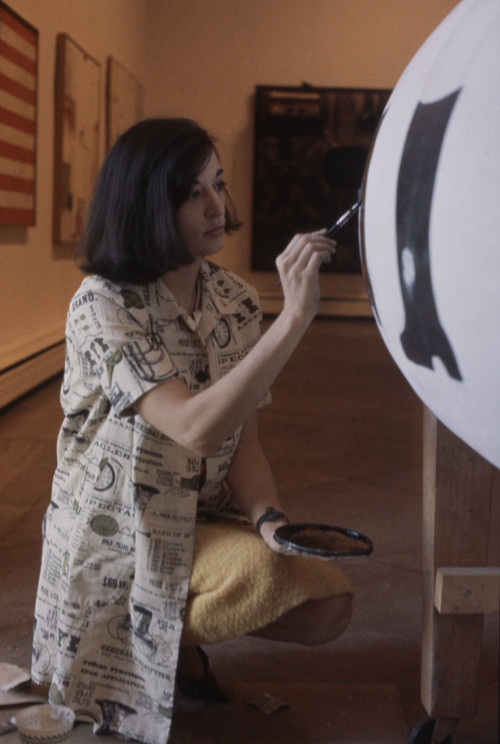The Toledo Museum of Art (TMA) will explore the life’s work of an artist who helped define the 1960s with “Marisol: A Retrospective,” on view March 2-June 2, 2024. The exhibition, organized by Buffalo AKG Art Museum, will chronicle the full arc of the artist’s practice with 244 works that address several themes, including politics, gender norms and ecological and societal concerns. Her recognizable sculptures and self-portraits will appear alongside lesser-known works, source materials, sketches, studies and personal photographs to offer visitors an insightful look into the artist’s life and working methods and the social climate that influenced her work.
“Marisol’s work is well-represented in the Toledo Museum of Art collection, and it is exciting to be able to participate in this major retrospective to give our audience a fuller understanding of her practice and its significance,” said Adam Levine, Edward Drummond and Florence Scott Libbey director and CEO. “We seek through our acquisitions and exhibitions to contribute to expanding the canon, and this exhibition centers Marisol’s significant contributions appropriately within post-war art history in the fullest way yet.”
“Marisol: A Retrospective” will introduce visitors to the multiplicity of her practice. Although portraiture and self-portraiture anchor many of her most recognizable works, her contributions in the 1960s and 1970s were vast and varied. The exhibition will explore the breadth of her work, including her underwater films and photographs and her public art practice, which are often overlooked.
“The Party” (1965-66), an installation-based work in TMA’s collection, features prominently in the exhibition. The assemblage of 15 wooden figures depicts guests at, in Marisol’s words, “a very elegant ball.” All of the sculptures bear Marisol’s face. Many hold drinkware and other party accessories and are dressed in attire from Marisol’s personal wardrobe. Ballgowns, aprons and other clothing choices denote each character’s social status. While these guests are in physical proximity and attending this gathering together, they seem psychologically distant from one another. Marisol, widely known for her reclusive nature, often added her persona to her work as a strategy to be present and part of a larger social fabric.
“This wide-ranging retrospective in part examines Marisol’s celebrated wooden figurative sculptures, including ‘The Party,’ within an expanded framework and the context of the 1960s, an era of major artistic, sociocultural and technological shifts Marisol alludes to in her work,” said Jessica Hong, TMA’s senior curator of modern and contemporary art. “The themes and concerns within Marisol’s practice continue to resonate to this day, as a work like ‘The Party’ contends with isolation and connectivity, the individual and collective, and societal and human relations more broadly.”
According to the Buffalo AKG Art Museum, the organizer of the exhibition, “Baby Girl” (1963) “has been an audience favorite since the early 1960s” and is on view in the exhibition. “Although Marisol’s assemblage sculptures were often associated with the Pop art movement during its earliest years, works like ‘Baby Girl’ are distinct from the observations on mass media and mass culture put forward by friends and peers such as Andy Warhol.”
Marisol (born María Sol Escobar, 1930, Paris) achieved renowned acclaim in the 1960s when thousands would line up to see her often life-size artworks. When she retreated from the art world and shifted her artistic focus in the late 1960s and 1970s, her fame waned despite continuing to practice.
“Writing and scholarship around Marisol have been limited. This exhibition provides more nuanced, complex understandings around her work,” said Hong. “The Toledo Museum of Art has and continues to be committed to foregrounding underrecognized artists and sharing new insights into their work while participating in critical issues of our day."
A fully illustrated catalogue will further explore Marisol’s life and work with never-before-seen archival images and new essays about her life and art. Hong is among the contributors.
“Marisol: A Retrospective” is organized by the Buffalo AKG Art Museum and curated by Cathleen Chaffee, Buffalo AKG’s Charles Balbach chief curator. The exhibition and catalogue are supported by a major grant from the Henry Luce Foundation. Critical work related to this exhibition and collection was made possible in part by a major grant from the National Endowment for the Humanities.
